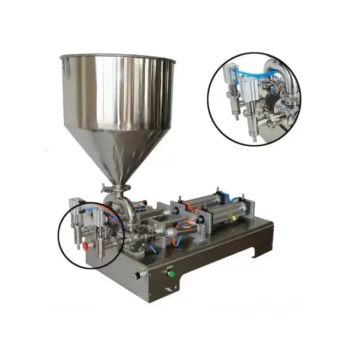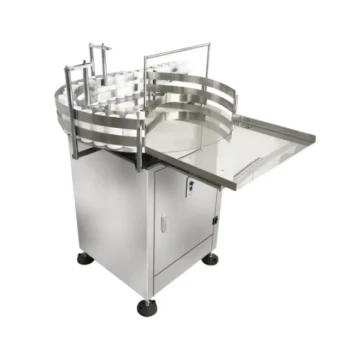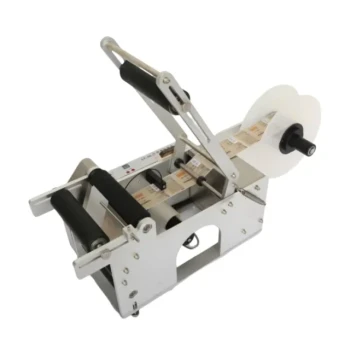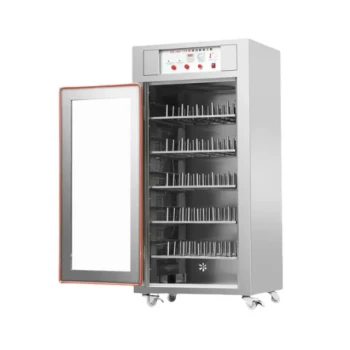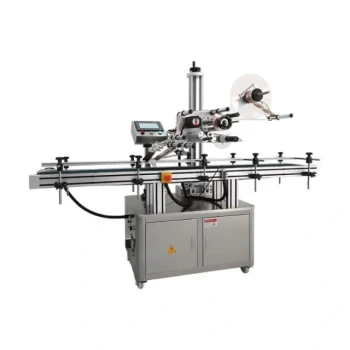At its core, filling equipment is specialized machinery designed to accurately dispense a specific quantity of a product into a container like a bottle, bag, or pouch. This equipment is categorized based on two primary factors: the characteristics of the product being filled (such as liquid, powder, or granules) and the underlying technology the machine uses to measure the product (such as by volume, weight, or level).
The most critical decision in selecting filling equipment is not finding the "best" machine, but matching the machine's operating principle to the unique physical properties and value of your product. This alignment is the key to achieving both efficiency and accuracy.
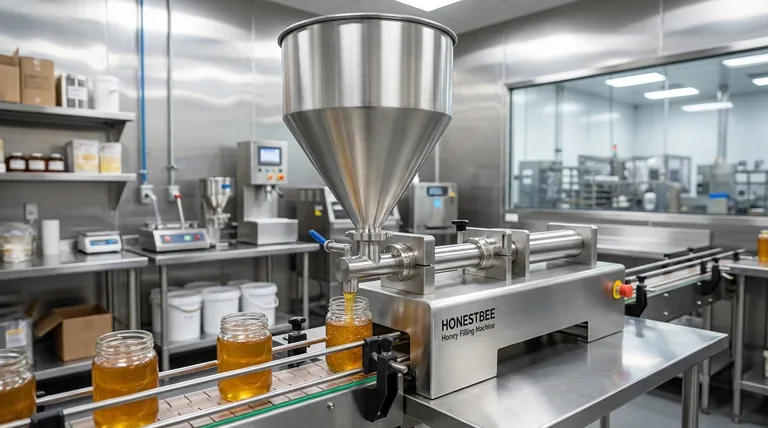
The Core Principles of Product Filling
Before examining specific machine types, it's essential to understand the fundamental methods they use to measure a product. Almost every filler falls into one of these categories.
Filling by Volume
Volumetric fillers dispense a consistent volume of product into each container. This method is efficient and fast, making it ideal for products with a stable density.
The most common type is the piston filler, which uses a cylinder and piston mechanism to draw in and then dispense a precise volume of liquid, cream, or paste.
Filling by Weight
Net weight fillers measure the product by weight before dispensing it into the container. This approach is exceptionally accurate and is preferred for high-value products where minimizing "giveaway" is critical.
This method is also essential for products with inconsistent density, such as snack foods, coffee, or craft powders, where a consistent volume would result in a varying weight.
Filling to a Level
Level fillers, as the name implies, fill each container to the same visual height. This method is used primarily for transparent containers where a consistent appearance on the retail shelf is paramount.
The actual volume or weight may vary slightly from container to container due to minor inconsistencies in the container's shape, but the fill line will be perfectly uniform.
Common Types of Filling Equipment
With the core principles understood, we can look at how different machine designs are engineered for specific products and production needs.
For Liquids: Piston and Rotary Fillers
Piston fillers are versatile volumetric machines excellent for a wide range of liquid viscosities, from thin juices to thick sauces. They are known for their accuracy and reliability.
Rotary fillers are high-speed systems where containers move on a circular turret. They can be designed to fill by volume, level, or weight, but their primary advantage is maximizing throughput for large-scale production.
For Powders & Granules: Auger and Vibratory Fillers
For powders, the key distinction is whether the product is free-flowing (like granulated sugar) or non-free-flowing (like flour).
Auger fillers use a large screw to dispense precise amounts of non-free-flowing powders. Vibratory weigh fillers use vibration to gently move free-flowing granules or small pieces into a weigh bucket for accurate measurement before dispensing.
For Specialized Needs: Aseptic Fillers
Aseptic fillers are not defined by how they fill but by the sterile environment they create. This equipment is used for products like milk, pharmaceuticals, or juices that must be packaged free of bacteria to ensure a long shelf life without refrigeration.
Understanding the Trade-offs
Choosing filling equipment involves balancing competing priorities. There is no single solution that is best for every application.
Speed vs. Accuracy
Generally, the fastest machines, like rotary fillers, may sacrifice a small degree of accuracy for throughput. Conversely, highly precise systems like net weight fillers often operate at slower speeds.
Flexibility vs. Specialization
A simple piston filler might handle a wide range of liquids, offering high flexibility. A specialized auger filler, however, is designed only for powders and offers no flexibility for other product types.
Initial Cost vs. Long-Term Savings
A highly accurate net weight filler typically has a higher initial purchase price. However, by preventing product giveaway on every single container, it can provide significant cost savings over its operational lifetime, especially with expensive products.
Making the Right Choice for Your Goal
Your product and business objectives will determine the correct path forward.
- If your primary focus is high-speed bottling of a consistent liquid: A rotary volumetric or level filler is your most efficient option.
- If your primary focus is maximum accuracy for a high-value powder: A net weight filler is the only choice to minimize product loss.
- If your primary focus is packaging a thick paste into jars: A piston filler provides the power and volumetric accuracy required for viscous products.
- If your primary focus is ensuring product sterility and long shelf life: An aseptic filling system is a mandatory investment.
Ultimately, the right filling equipment is the one that treats your specific product with the precision and care it requires.
Summary Table:
| Filling Method | Best For | Key Equipment |
|---|---|---|
| Volume | Liquids, creams, pastes with stable density | Piston Filler, Rotary Filler |
| Weight | High-value products, powders, granules with variable density | Net Weight Filler |
| Level | Transparent containers where uniform appearance is key | Level Filler |
| Aseptic | Products requiring a sterile environment for long shelf life | Aseptic Filler |
Ready to Optimize Your Filling Line?
Choosing the right filling equipment is critical for the efficiency and profitability of your operation. At HONESTBEE, we specialize in supplying high-quality, durable beekeeping supplies and equipment to commercial apiaries and distributors. Whether you need reliable machinery for honey, creamed honey, or other hive products, we provide wholesale-focused solutions tailored to your scale.
Partner with HONESTBEE to benefit from:
- Expert Guidance: We help you select equipment that matches your product's unique properties.
- Durable & Reliable Machinery: Built for the demanding environment of commercial beekeeping.
- Wholesale Efficiency: Cost-effective solutions designed for high-volume operations.
Let's discuss how we can support your business. Contact our team today for a personalized consultation!
Visual Guide

Related Products
- Pneumatic Double Nozzle Honey Filling Bottling Packaging Machine
- Pneumatic Paste Filling Machine Bottling Packaging Machine Single Nozzle
- Automated Rotary Bottle Unscrambler for Honey Production Line
- Semi Automatic Round Bottle Labeling Machine
- HONESTBEE Professional Cabinet Bottle Dryer
People Also Ask
- How does production volume influence the choice of a honey packaging machine? Scale Your Operation Efficiently
- What temperature for bottling honey? Master the Perfect 49°C (120°F) for Quality & Flow
- What are the different types of honey fillers? A Guide to Manual, Semi & Fully-Automatic Fillers
- What are the main differences between automated and manual honey filling? Scale Your Bottling Operation
- What are the key features of a honey packaging machine? Essential for Quality & Efficiency
